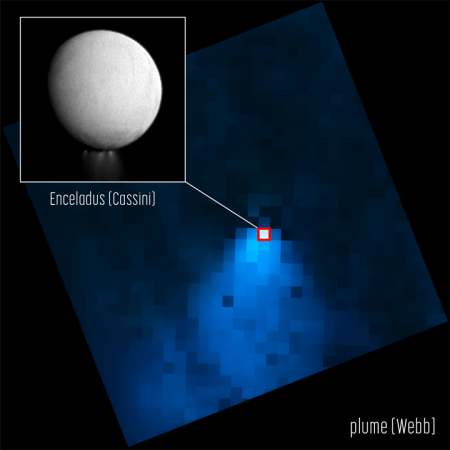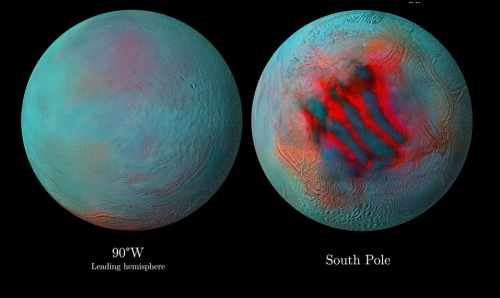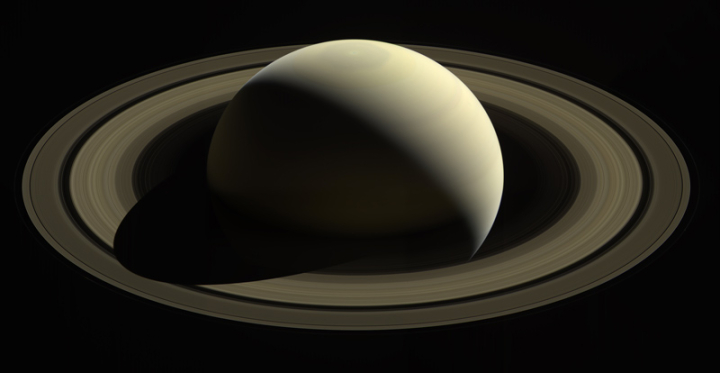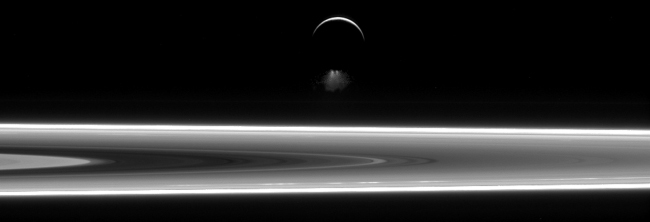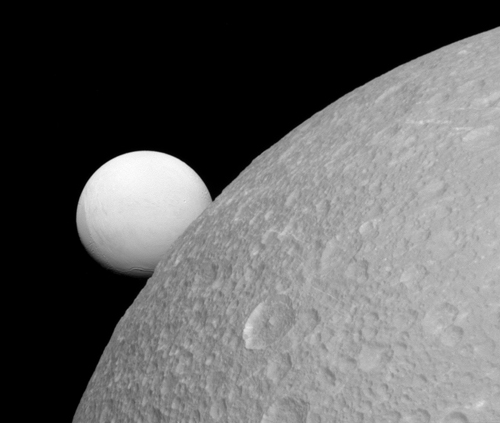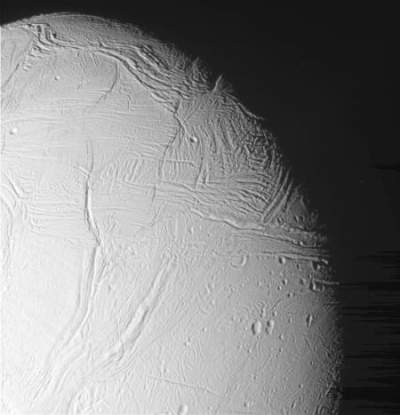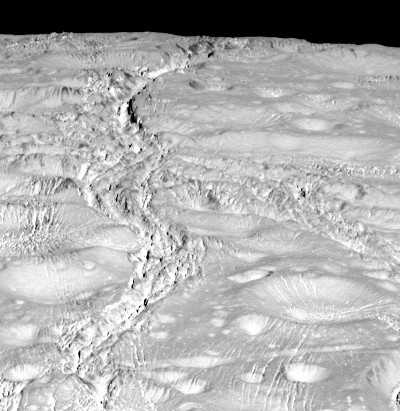Analysis of archived Cassini data finds a new slate of carbon-based molecules in the plumes of Enceladus
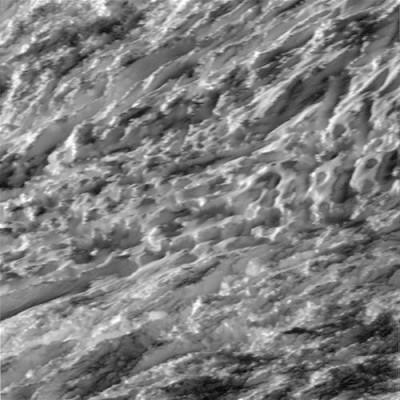
The tiger strip vents on Enceladus, seen
from 77 miles during 2015 fly-by. Resolution is
50 feet per pixel.
A new analysis of the archived Cassini data taken when the spacecraft flew through the plumes of the Saturn moon Enceladus in 2008 has revealed a number of new organic molecules (not life but carbon-based) that suggest the chemistry of the moon of Saturn is far more complex that expected.
You can read the paper here. From the abstract:
Here we present a comprehensive chemical analysis of organic-bearing ice grains sampled directly from the plume during a Cassini fly-by of Enceladus (E5) at an encounter speed of nearly 18 km [per second]. We again detect aryl and oxygen moieties in these fresh ice grains, as previously identified in older E-ring grains. Furthermore, the unprecedented high encounter speed revealed previously unobserved molecular fragments in Cosmic Dust Analyzer spectra, allowing the identification of aliphatic, (hetero)cyclic ester/alkenes, ethers/ethyl and, tentatively, N- and O-bearing compounds. These freshly ejected species are derived from the Enceladus subsurface, hinting at a hydrothermal origin and involvement in geochemical pathways towards the synthesis and evolution of organics.
In other words, this data further suggests there exists an underground ocean inside Enceladus, and that ocean has a lot of complex organic chemistry energized by the planet’s internal heat and the tidal forces imposed by Saturn’s gravity.
This is not the first time scientists have reviewed archived Cassini data of these plumes and found new molecules. It is simply a closer look at earlier analyses in 2018 and 2019.
This data has not discovered life, but it suggests that life is certainly possible within that proposed underground ocean. At a minimum, the chemistry there will be very complex and alien.

The tiger strip vents on Enceladus, seen
from 77 miles during 2015 fly-by. Resolution is
50 feet per pixel.
A new analysis of the archived Cassini data taken when the spacecraft flew through the plumes of the Saturn moon Enceladus in 2008 has revealed a number of new organic molecules (not life but carbon-based) that suggest the chemistry of the moon of Saturn is far more complex that expected.
You can read the paper here. From the abstract:
Here we present a comprehensive chemical analysis of organic-bearing ice grains sampled directly from the plume during a Cassini fly-by of Enceladus (E5) at an encounter speed of nearly 18 km [per second]. We again detect aryl and oxygen moieties in these fresh ice grains, as previously identified in older E-ring grains. Furthermore, the unprecedented high encounter speed revealed previously unobserved molecular fragments in Cosmic Dust Analyzer spectra, allowing the identification of aliphatic, (hetero)cyclic ester/alkenes, ethers/ethyl and, tentatively, N- and O-bearing compounds. These freshly ejected species are derived from the Enceladus subsurface, hinting at a hydrothermal origin and involvement in geochemical pathways towards the synthesis and evolution of organics.
In other words, this data further suggests there exists an underground ocean inside Enceladus, and that ocean has a lot of complex organic chemistry energized by the planet’s internal heat and the tidal forces imposed by Saturn’s gravity.
This is not the first time scientists have reviewed archived Cassini data of these plumes and found new molecules. It is simply a closer look at earlier analyses in 2018 and 2019.
This data has not discovered life, but it suggests that life is certainly possible within that proposed underground ocean. At a minimum, the chemistry there will be very complex and alien.


